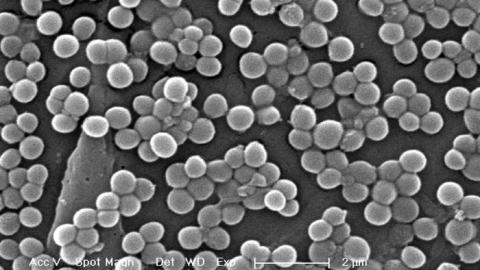Supergerms Cost Health System $20 Billion Annually

Everyone’s running their mouth about COP15 this week. No progress will be made; great progress will be made!; developed countries won’t put enough money on the table; developed countries will put enough money on the table!; Obama’s all talk; Obama’s all action; we’ll never keep it under 2 degrees Celsius; we WILL keep it under 2 degrees Celsius! It wears a person down, you know? Let’s set COP15 aside for a moment, and talk about something manageable, like supergerms!
Those friendly ARIs (antibiotic resistant infections) like MRSA, and the deadly strain of TB a man recently carried onto a plane. Thanks to antibiotic overuse in our medical system and in the meat industry – which keeps chickens, pigs, cows and turkeys hopped up on daily doses of antibiotics, just so they don’t croak due to the horribly unhealthy living conditions they endure – supergerms are making their happy little way out into the general population in hordes.
A recent study from the Alliance for the Prudent Use of Antibiotics (APUA) and the John H. Stroger, Jr. Hospital of Cook County revealed some inconvenient truths about the economics of antibiotic overuse and our medical system’s uphill battle against ARIs. Apparently, the healthcare system, ARI victims, and those who financially support ARI victims are coughing up a whopping $20 billion annually to fight these nasty supergerms.
Titled “Hospital and Societal Costs of Antimicrobial Resistant Infections in a Chicago Teaching Hospital: Implications for Antibiotic Stewardship,” APUA’s study took a sample population of 1,391 hospital patients (this was in 2000), and followed the costs of their treatments for the duration of their stay. 188 of the original 1,391 patients had ARIs when the study began. Patients suffering from ARIs were kept in the hospital for about six to thirteen extra days, and racked up bills on the order of $18,588 to $29,069.
It’s not just money, either. The study, funded in part by the Centers for Disease Control and Prevention (CDC), found that patients with ARIs are more than two times more likely to die from their infections than patients with non-resistant bacterial infections.
Here’s what you can do about it:
Wow. That was a downer. Some trivia to lighten the mood: your body hosts some 2 quadrillion bacterial cells at any given moment. Which means you’re made of 20 times more bacterial cells than actual human cells.





